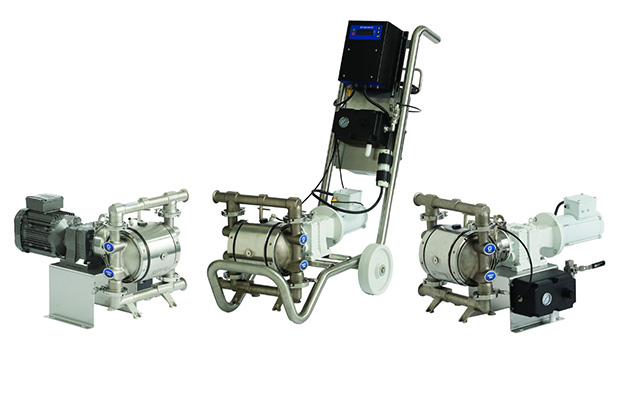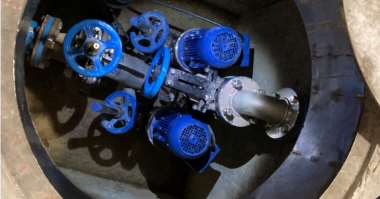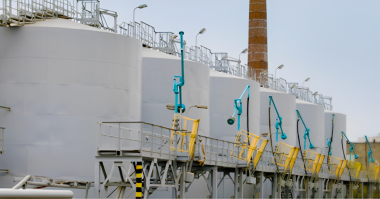SaniForce 1040e is a Game Changer for Electric Pump Designs
Author: Jeffrey Shaffer, Product Marketing Manager, Graco Inc.
When selecting a pump for a food and beverage production facility, operators must consider many different factors before arriving at a decision. Flow and pressure needs normally come to mind first, but just as important should be the question of how the pump will affect the material being pumped. Often times, centrifugal pumps and other rotary pumps can cause shear damage to the material being pumped, which comes from the spinning design of the impeller and the throwing motion of the pump. This is especially the case in food and cosmetic applications, in which the product ingredients need to be transferred without any change to the consistency and structure of the ingredients. These materials are very costly, thousands of dollars per drum, and the damage caused by rotary pumps often leads to wasted resources and expensive rework. Contrary to rotary pumps, diaphragm pumps are considered low-shear because their gentle diaphragm pulsations will not damage the fluid.
There are a few other disadvantages to rotary pumps for specific fluids and applications. Almost all rotary pumps—centrifugal, rotary lobe, progressive cavity, or others—employ a rotary shaft seal where the pump couples to the gear-box and motor. This seal point becomes an issue due to leakage and heat. Over time, leakage from these seals is to be expected and raises sanitation concerns as well as repair costs. In addition, the rotation and friction of the shaft and seal adds unwanted heat to product being pumped and can cause long term damage to the pump and well as alter the material.
Another maintenance consideration for rotary electric pumps used in food, beverage, and pharmaceutical industries is the inability to run dry for any extended period without damaging the internal components of the pumps and creating problems for the whole production process. Operators of progressive cavity pumps know that a close eye, if not expensive instrumentation, is required to monitor pumps in case they start to run dry. On a food production line, plant operators have many different responsibilities, and they are not able to monitor pumps at all times. This causes problems when rotary lobe pumps run out of material coming from the inlet which can seriously damage the rotor, bearings, and seals of the pump, and operators find themselves calling their procurement manager to arrange for the delivery of a new pump. Even with the use of automatic sensors to monitor pumps, the added instrumentation creates more potential leak paths and points for bacteria growth in the system, which can cause bigger issues. By contrast, the seal-less and non-rotating design of a double diaphragm pump is much more forgiving within plant environments where there are many moving pieces and not enough personnel to monitor every detail. For diaphragm pumps, running dry is no longer an issue of dire consequence.
One on-going struggle on the side of diaphragm pumps in electric pump applications has been pulsation. The Graco SaniForce 1040e solves the problem of pulsation so that the benefits of diaphragm pumps can be utilized. The patent pending drive of the SaniForce 1040e eliminates pulsation on the pump outlet with the diaphragm pump. This is because the different fluid chambers operate somewhat independently, which allows for the pressure on the pump outlet to stay high throughout the pump stroke where a typical diaphragm pump would have periods of low pressure during the pump change-over. This is especially important if the pump is feeding a depositing head or coating table. This drive design in the 1040e can also stall while maintaining downstream fluid pressure without the use of any additional sensors and feedback loops.
At the end of the day, there are applications for all different pumps within markets of the electric sanitary centrifugal and positive displacement pumps. However, using the wrong pump for a specific application is a serious struggle in many plants. Think about using the wrong tool to work on your car. By addressing some of the above application issues and allowing for more streamlined plant operation.
Visit www.graco.com for more information about the SaniForce 1040e Electric Diaphragm Pump.





Comments